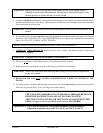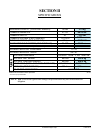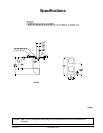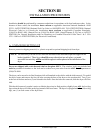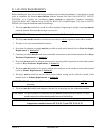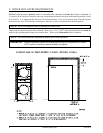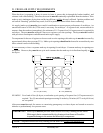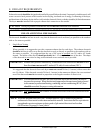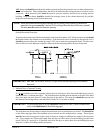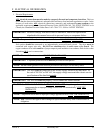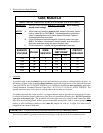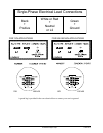
10 American Dryer Corp. 113215-5
E. EXHAUST REQUIREMENTS
Exhaust ductwork should be designed and installed by a qualified professional. Improperly sized ductwork will
create excessive back pressure which results in slow drying, increased use of energy, overheating of the dryer,
and shut down of the burner by the airflow (sail) switches, burner hi-limits, or basket (tumbler) hi-limit thermostats.
The dryer must be installed with a proper exhaust duct connection to the outside.
CAUTION: This dryer produces combustible lint and must be exhausted to the outdoors.
CAUTION: IMPROPERLY SIZED OR INSTALLED EXHAUST DUCTWORK CAN
CREATE A POTENTIAL FIRE HAZARD.
The ductwork should be laid out in such a way that the ductwork travels as directly as possible to the outdoors
with as few turns as possible.
1. Single Dryer Venting
Where possible, it is suggested to provide a separate exhaust duct for each dryer. The exhaust ductwork
should be laid out in such a way that the ductwork travels as directly as possible to the outdoors with as
few turns as possible. It is suggested that the use of 90° turns be avoided; use 30° and/or 45° bends
instead. The radius of the elbows should preferably be 1-1/2 times the diameter of the duct. The shape
of the ductwork is not critical as long as the minimum cross-sectional area is provided.
IMPORTANT: Exhaust back pressure measured by a manometer in the exhaust duct must be no less
than 0 and must not exceed 0.3 inches (0.74 mb) of water column (W.C.).
It is suggested that the ductwork from each dryer must not exceed 20 feet (6.1 meters) with no more than
two (2) elbows. If the ductwork exceeds 20 feet (6.1 meters) or has numerous elbows, the cross-sectional
area of the ductwork must be increased in proportion to the length or number of elbows in it.
IMPORTANT: For extended ductwork runs, the cross-sectional area of the ductwork can only be
increased to an extent. When the ductwork approaches the maximum limits as noted
in this manual, a professional heating, ventilating, and air-conditioning (HVAC) firm
should be consulted for proper venting information.
IMPORTANT: It is recommended that exhaust or booster fans not be used in the exhaust ductwork
system.
NOTE: As per the National Fuel Gas Code, “Exhaust ducts for Type 2 clothes dryers shall be
constructed of sheet metal or other noncombustible material. Such ducts shall be equivalent in
strength and corrosion resistance to ducts made of galvanized sheet steel not less than
0.0195 inches (26 gauge [0.5 mm]) thick.”




